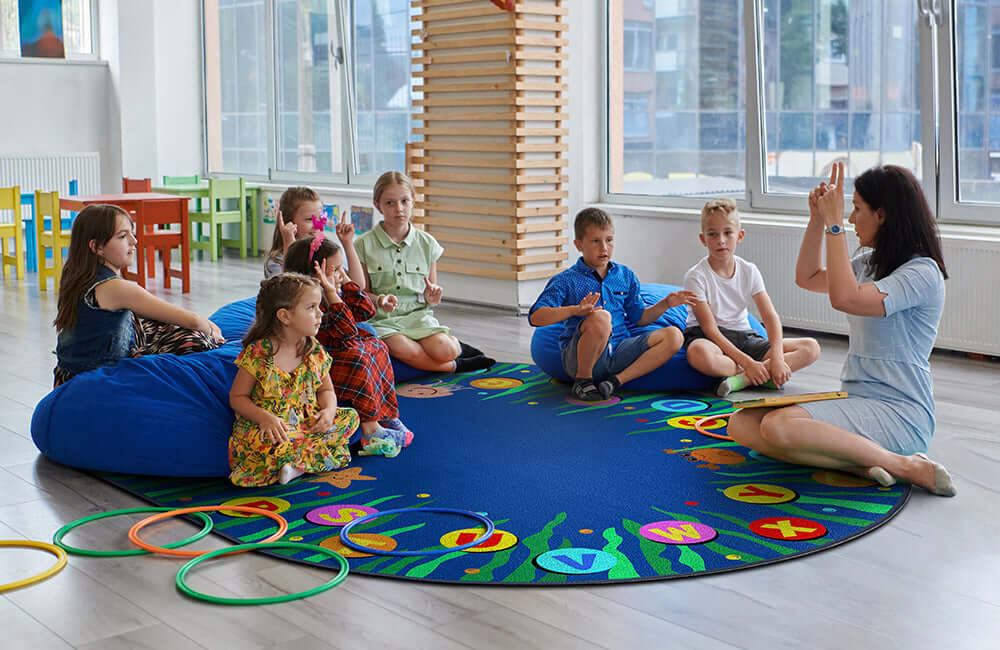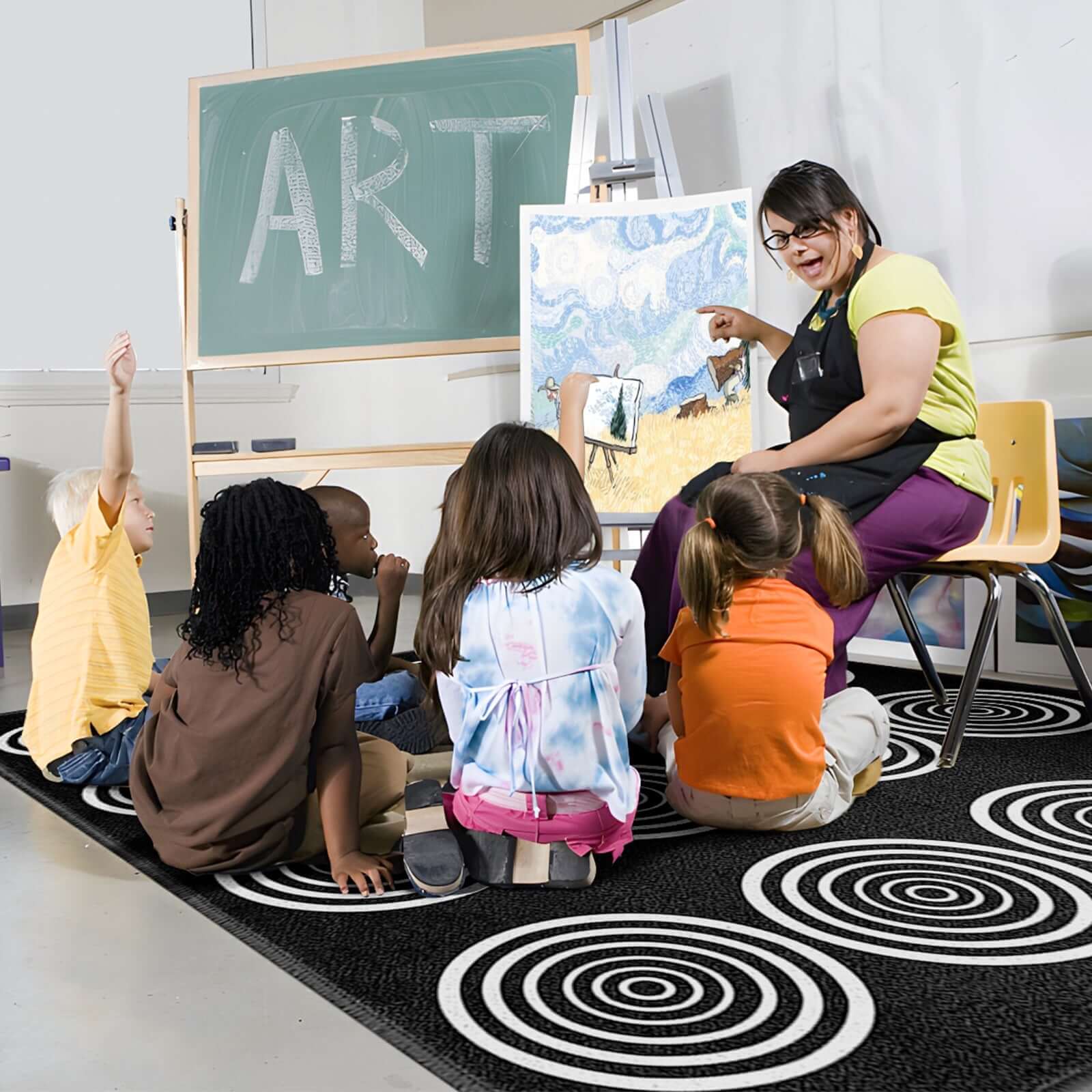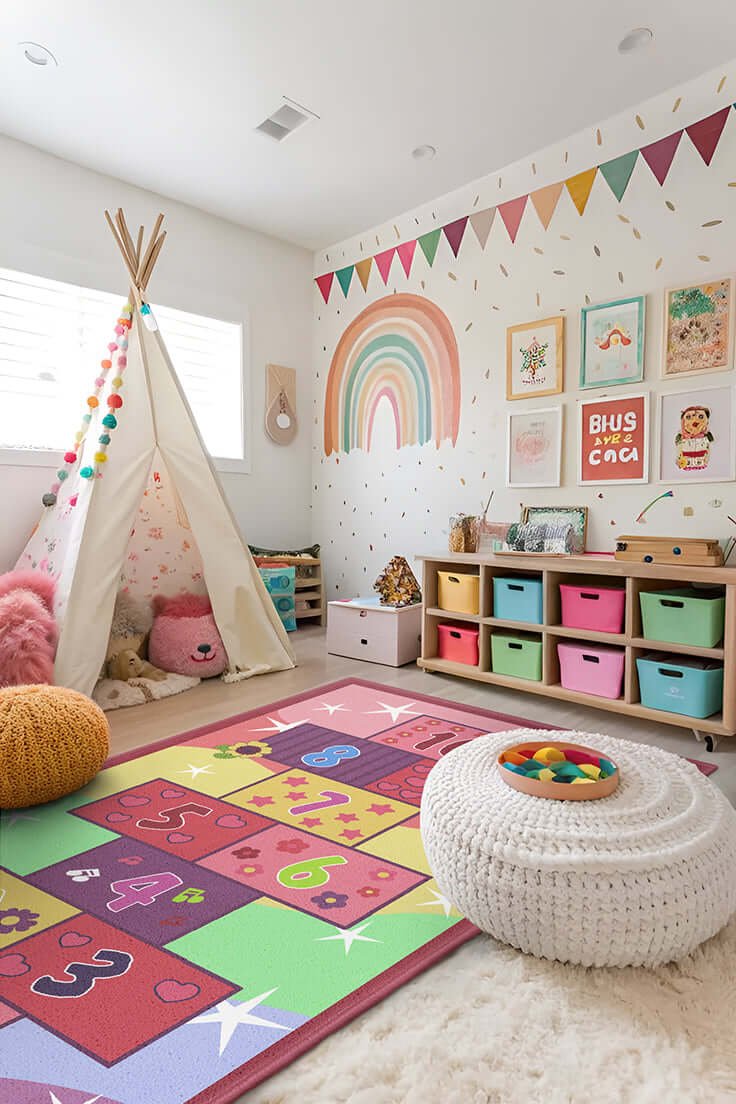The Power of Classroom Rugs in Educational Settings
Classroom rugs serve as more than decorative elements—they're strategic educational tools that define learning zones and create psychological comfort.
When students gather on a soft, designated area, they naturally form closer connections with both peers and instructors, facilitating meaningful discussions and collaborative activities.
Research from the National Association for the Education of Young Children demonstrates that flexible seating arrangements, including rug areas, significantly improve student attention spans and participation rates.
The tactile experience of sitting on carpet creates a sensory anchor that helps children focus and feel secure in their learning environment.
Designing Effective Collaborative Learning Zones
Size and Placement Considerations
The ideal classroom rug should accommodate your largest group activity while fitting comfortably within your available space.
A general rule suggests allowing 2-3 square feet per student, ensuring everyone can sit comfortably without crowding.
Position your rug away from high-traffic areas to minimize distractions during focused activities.
Educational Design Elements
Modern educational furniture incorporates learning directly into design. Look for rugs featuring:
- Alphabet borders for literacy reinforcement
- Number grids for mathematical concepts
- Geographic maps for social studies integration
- Color-coded sections for group organization
Benefits of Implementing Classroom Rugs
Enhanced Student Engagement
Students naturally gravitate toward comfortable, inviting spaces. Rug areas create an informal atmosphere that encourages participation from even the most reluctant learners.
The change in elevation and texture signals a shift from formal instruction to collaborative exploration.
Improved Classroom Management
Designated rug spaces help establish clear boundaries and expectations. Students learn to respect the special area, often self-regulating their behavior when entering the collaborative zone.
This classroom organization strategy reduces disruptions and maintains focus during group activities.
Sensory Benefits for Diverse Learners
Children with sensory processing differences often benefit from the tactile input provided by carpet fibers.
The soft surface can have a calming effect, helping anxious students feel more comfortable participating in group discussions and activities.
Selecting the Right Classroom Rug
Material and Durability
High-traffic classroom environments demand rugs constructed from durable, stain-resistant materials. Look for options with:
- Nylon or polypropylene fibers for longevity
- Antimicrobial treatments to maintain hygiene
- Low-pile construction for easy cleaning
- Non-slip backing for safety
Maintenance and Hygiene
Regular vacuuming and periodic deep cleaning keep classroom rugs fresh and hygienic. Many educators find success with weekly spot-cleaning routines and monthly professional treatments, ensuring the collaborative space remains inviting throughout the school year.
Creative Implementation Strategies
Reading Circles and Story Time
Transform your rug area into a soft, comfortable rug areas where students can escape into literature.
The intimate setting encourages discussion about plot elements, character development, and personal connections to the text.
STEM Collaboration Zones
Use your rug space for hands-on science experiments, mathematical problem-solving sessions, and engineering challenges.
The flexible seating arrangement allows students to move freely, share materials, and observe demonstrations from multiple angles.
Social-Emotional Learning Activities
Circle time discussions about feelings, conflict resolution, and community building flourish in the comfortable rug environment.
Students feel more open to sharing when seated at eye level with peers in a non-threatening space.
Integration with Modern Learning Environments
Today's classrooms blend traditional and innovative approaches, with rugs serving as bridges between structured and flexible learning.
They complement standing desks, collaborative tables, and quiet reading corners, creating a comprehensive educational ecosystem that meets diverse learning preferences.
Budget-Friendly Implementation Tips
Quality classroom rugs represent a worthwhile investment, but budget constraints shouldn't prevent implementation. Consider:
- Gradual purchases spread across multiple budget cycles
- Grant opportunities from educational foundations
- Parent-teacher organization fundraising initiatives
- End-of-year sales from educational suppliers
Measuring Success and Impact
Track the effectiveness of your classroom rug implementation through:
- Student participation rates during rug activities
- Behavioral incident reports in the collaborative space
- Academic performance in subjects taught on the rug
- Student feedback about their learning preferences
Future Trends in Collaborative Learning Spaces
Educational design continues evolving, with smart classroom technologies integrating into flexible learning environments.
Interactive projection systems can transform any rug into a digital learning surface, while wireless microphone systems ensure every student's voice is heard during group discussions.
Conclusion
Classroom rugs represent more than simple floor coverings—they're catalysts for educational transformation.
By creating comfortable, defined spaces for collaboration, these versatile tools help teachers build inclusive learning communities where every student can thrive.
As education continues embracing flexibility and student-centered approaches, the humble classroom rug remains an essential component of effective learning environments.
The investment in quality educational rugs pays dividends through improved student engagement, enhanced collaboration, and strengthened classroom communities.
Whether you're redesigning an existing space or planning a new classroom, consider how the strategic placement of collaborative rug areas can elevate your students' educational experience.




Leave a comment
This site is protected by hCaptcha and the hCaptcha Privacy Policy and Terms of Service apply.